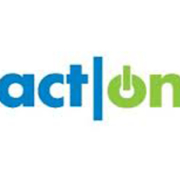
In my four decades in sales leadership at both large enterprises and early-stage growth companies, and in my subsequent consulting & sales advisory practice, I have witnessed and resolved many poor sales practices. If sales leaders do not diagnose and correct these Deadly Sins of Selling, then accelerated and predictable sales outcomes will be in jeopardy. I recount these sins with amusement since they also tell us something about human nature and how that factors into successful selling practices. Individual sellers, their sales managers, sales trainers, and sales coaches can all benefit from being on alert to these common sins.
Sin #1: I’ll pretend I’m selling, if you pretend, you’re buying. The deadly embrace!
Do you have stalled opportunities in your pipeline?
One cause of stalled opportunities can be the deadly embrace that occurs between a seller and a buyer. That is, when both the salesperson and the buyer can achieve a personal win in the seller-buyer journey, even without a successful transaction being a likely outcome. They may both sense this early in the process but can’t let go of the deal storyline that is working for their individual interests.
In this vignette, the salesperson, Karen, is under pressure to advance her pipeline deals and wants nothing more than to show up at the weekly sales pipeline call with a big deal in the hopper. She may become the focus of the call, and even achieve some hero status, i.e. “you will save our quarter with this deal”. Karen summarizes that her relationship with the buyer is growing nicely, that he has a personal interest in seeing this move forward, and that there are compelling reasons for his company to benefit from her solution. Karen states that the buyer is always accessible to her and welcomes a lunch meeting or Zoom “touch base” call at any time.
And Charlie, the buyer, wants nothing more than the attention he is getting from this salesperson. In this seller-buyer context, Charlie feels he is an important person speaking for his company and is being treated as an influential and key decision-maker.
After many months, it turned out both were wrong. Karen was not really selling, and Charlie was not really buying. They were locked in a deadly embrace of personal interests. Karen wanted nothing more than to say she had a deal about to close, and Charlie wanted to elevate his feeling of status and possibly get the attention of his management for this solution idea even though it ended up being a low priority for his senior management.
There are important lessons from this selling sin that cause stalled opportunities:
- For a salesperson, it is often easier and more rewarding in the short term to stay in their comfort zone with a “pretend deal” and a buyer who appears interested rather than ask the hard questions of the prospect and face “no deal at all.” Human factors always play a role in the selling process.
- Karen’s sales manager may have pressed this issue by asking a few simple yes/no questions. For example, Will Charlie be signing our contract? Have we met Charlie’s boss? Aside from Charlie, who else at the prospect will influence the outcome?










Leave a Reply
Want to join the discussion?Feel free to contribute!